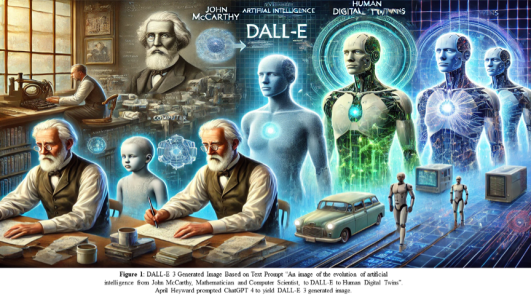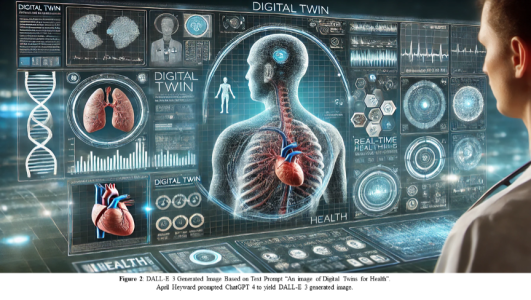Widgetized Section
Go to Admin » Appearance » Widgets » and move Gabfire Widget: Social into that MastheadOverlay zone
The Evolution of AI: From John McCarthy to DALL-E
The views expressed are those of the author and do not necessarily reflect the views of ASPA as an organization.
By April Heyward
July 1, 2024

Artificial intelligence is vast and multifaceted and its rapid pace evolution has solved global complex, tame and wicked problems. The COVID-19 pandemic was a complex and wicked problem. April Heyward described examples of artificial intelligence interventions employed during the COVID-19 pandemic in her article titled E-Government and Artificial Intelligence as Interventions to Combat the COVID-19 Pandemic. The types of interventions employed during the pandemic included, but not limited to, virtual doctors, sterilization robots, medical assistant robots and contact tracing. Virtual doctors diagnosed patients to reduce the strain on health systems. Sterilization robots sterilized health care facilities. Medical assistant robots delivered medications and meals to patients to decrease exposure between healthcare staff and patients and to conserve the use of PPE (Personal Protective Equipment) due to PPE shortage. Contact tracing chatbots and apps identified prevalence of COVID-19 cases in geographical locations. Heyward aims to underscore the evolution of artificial intelligence from John McCarthy who formally characterized artificial intelligence to DALL-E.
The antecedents of artificial intelligence in the United States can be traced back to as early as the 1930s but the phrase “artificial intelligence” publicly emerged in 1956. Researchers and practitioners from diverging disciplines contributed to the birth of artificial intelligence. The divergence in computer science, mathematics, electrical engineering, psychology, complex systems and political science disciplines yielded various names for what would later become known as artificial intelligence. The names put forward included, but are not limited to, thinking machines, electronic brain, reasoning machine, machine intelligence, intelligent machine, complex information processing and simulation of cognitive processes. John McCarthy (Dartmouth College), Marvin Minsky (Harvard University), Nathaniel Rochester (IBM Corporation) and Claude Shannon (Bell Telephone Laboratories) submitted a proposal to the Rockefeller Foundation to conduct research on artificial intelligence in August 1955. McCarthy convened a workshop titled Dartmouth Summer Research Project on Artificial Intelligence at Dartmouth College in 1956. The workshop served as the birth of the field of artificial intelligence. McCarthy’s primary aim for the workshop was to work on the overall research aim presented in the Rockefeller Foundation proposal. The proposal put forward the study will investigate “how to make machines use a language, form abstractions and concepts, solve kinds of problems now reserved for humans, and improve themselves”. McCarthy formally characterized the new field as artificial intelligence at the workshop. The participants that attended the workshop later became known as pioneers and leaders in AI. Herbert Simon, who is revered in computer science, public administration, economics, psychology and public administration; participated in the workshop.
The evolution of AI created several subfields and research areas such as machine learning, deep learning, generative AI, large language models, robotics, computer vision, neural networks and natural language processing, and XAI (Explainable Artificial Intelligence). This led to new public discourse surrounding artificial intelligence and human intelligence. Is artificial intelligence superior to human intelligence? Is AI trustworthy? What are ethical and security considerations for AI? Should there be full reliance on AI versus human intelligence in decision making? What is responsible AI? When to choose between artificial intelligence and human intelligence? The public discourse is interesting and can guide research agendas. AI can assist and expand human intelligence but this depends on the purpose of employing AI. AI has evolved to where language can be synthesized and generate images based on its interpretation of the language. OpenAI launched DALL-E in 2021 and subsequent releases in 2022 (DALL-E 2) and 2023 (DALL-E 3). DALL-E employees deep learning and natural language processing to generate images based on text prompts in ChatGPT.

For instance, Heyward prompted ChatGPT 4 to yield a DALL-E 3 generated image based on the raw text prompt “An image of the evolution of artificial intelligence from John McCarthy, Mathematician and Computer Scientist, to DALL-E to Human Digital Twins”. ChatGPT 4 responded to the text prompt and stated “Here is the image depicting the evolution of artificial intelligence from John McCarthy, mathematician and computer scientist, to DALL-E and finally to Human Digital Twins. It captures the progression and technological advancements in AI across different eras.” See Figure 1 for DALL-E 3 image interpretation of the evolution of AI text prompt. Heyward prompted ChatGPT 4 to yield a DALL-E 3 generated image based on the raw text prompt “An image of Digital Twins for Health”. ChatGPT 4 responded to the text prompt and stated “Here is the image depicting a digital twin for health in a futuristic medical setting. It shows a human digital twin with detailed visuals of internal organs and health data, surrounded by advanced medical interfaces and holographic displays. If you need any further modifications or additional details, feel free to let me know!” See Figure 2 for DALL-3 image interpretation the digital twins for health text prompt. AI continues to evolve at a rapid pace and is ubiquitous in every sector of life. Its evolution has identified numerous ways a machine can use language, form abstractions and concepts, solve some of the problems reserved for humans and continuously improve itself in collaboration with human intelligence. McCarthy, Minsky, Rochester and Shannon’s vision for AI has been achieved.
Author: April Heyward is the President of the South Carolina Academy of Science, Digital Twins for Health (DT4H) Consortium Member, Researcher, and R and SQL Programmer. Heyward’s research interests include, but not limited to, Artificial Intelligence, Data Science, Digital Twins for Health, Deep Learning, Generative AI, Health Informatics, Large Language Models, and Machine Learning. She can be reached at [email protected].






Follow Us!